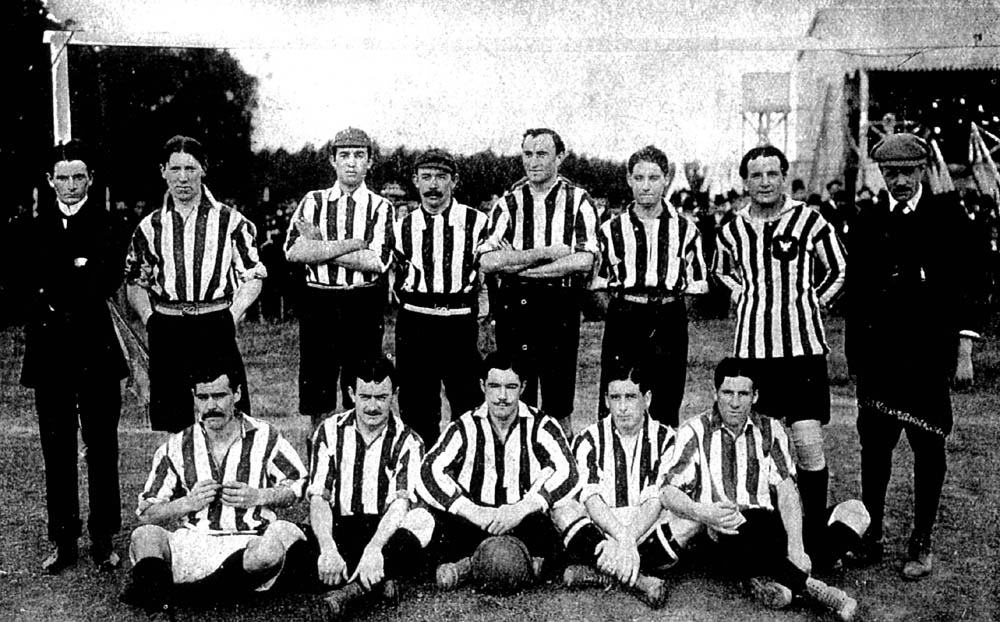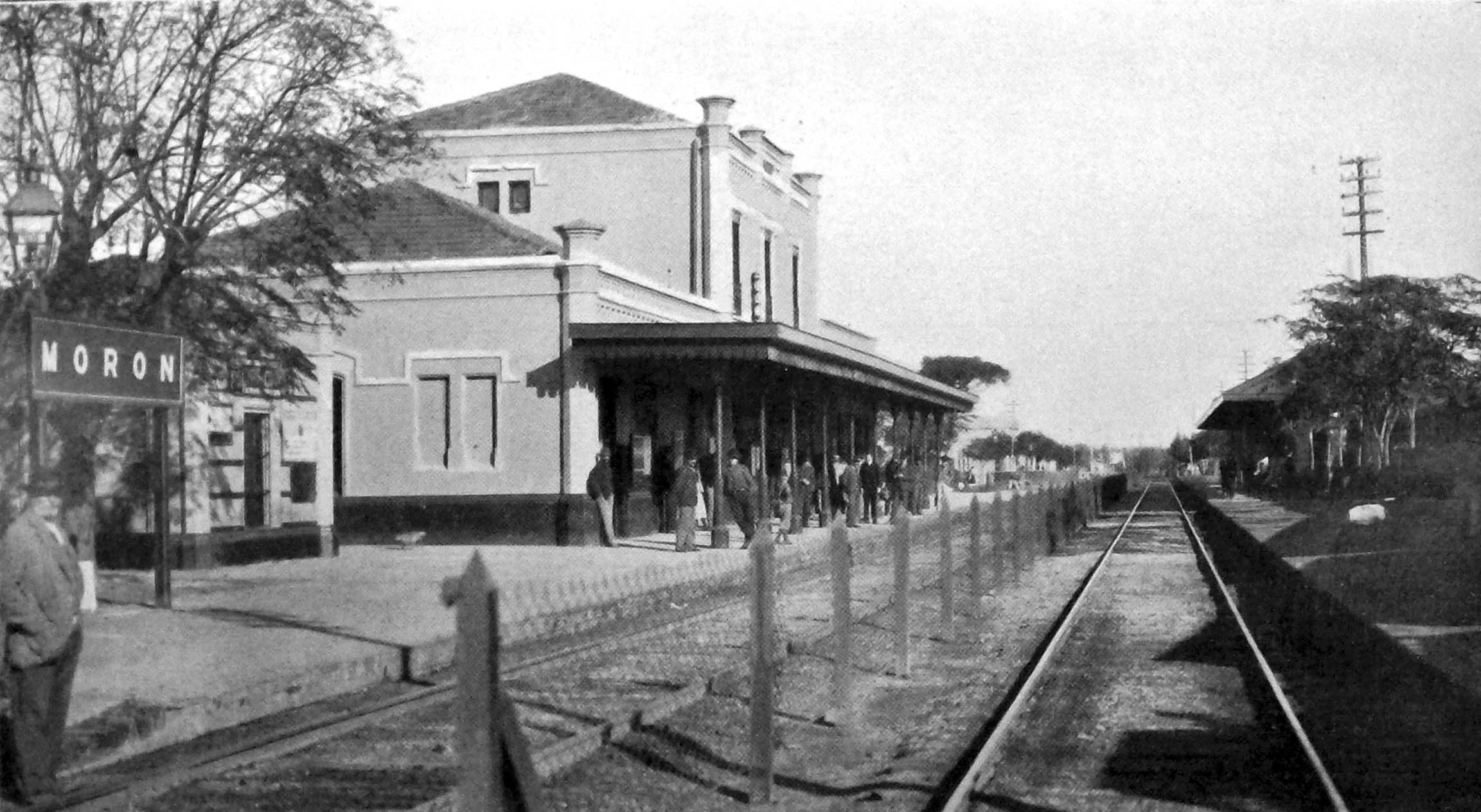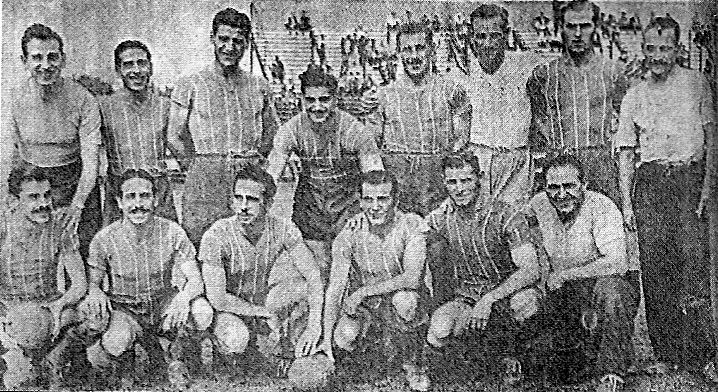|
2014 Primera B Metropolitana
The 2013-14 season, is the 29º Primera B Metropolitana season since it became part of the third tier of the Argentine football league system. The tournament is reserved for teams directly affiliated to the Asociación del Fútbol Argentino (AFA), while teams affiliated to AFA through local leagues (known as "indirectly affiliated to AFA") have to play the Torneo Federal A, which is the other third tier competition. For this season, AFA decided to change the structure in the Argentine football league system, and exceptionally 3 teams will be promoted to the next season of Primera B Nacional and there will be no relegations for this season. A total of 22 teams competed. Competition Format The tournament is composed of 22 teams playing in two zones on a double round-robin format, each team then playing a total of 20 matches. Three points are awarded for a win, one for a draw and none for a loss. The team of each zone with more points is automatically promoted to the Primera B Nacio ... [...More Info...] [...Related Items...] OR: [Wikipedia] [Google] [Baidu] |
Primera B Metropolitana
Primera B Metropolitana is one of two professional leagues that form the third level of the Argentine football league system. The division is made up of 17 clubs mainly from the city of Buenos Aires and its metropolitan area, Greater Buenos Aires. Originally created as the second division, it became the third level after a restructuring of the system in 1985 that ended with the creation of Primera B Nacional, set as the second division since then. The other league at level three is the Torneo Federal A, where teams from regional leagues take part. Format Primera B Metropolitana is currently organized so, during the course of a season, each club plays the others twice (a double round robin system), once at their home stadium and once at that of their opponents. The team that gets the most points at the end of the season is recognized as the Primera B champion and is automatically promoted to Primera B Nacional. The teams that hold the second to fifth positions have the chance to ... [...More Info...] [...Related Items...] OR: [Wikipedia] [Google] [Baidu] |
Buenos Aires
Buenos Aires ( or ; ), officially the Autonomous City of Buenos Aires ( es, link=no, Ciudad Autónoma de Buenos Aires), is the capital and primate city of Argentina. The city is located on the western shore of the Río de la Plata, on South America's southeastern coast. "Buenos Aires" can be translated as "fair winds" or "good airs", but the former was the meaning intended by the founders in the 16th century, by the use of the original name "Real de Nuestra Señora Santa María del Buen Ayre", named after the Madonna of Bonaria in Sardinia, Italy. Buenos Aires is classified as an alpha global city, according to the Globalization and World Cities Research Network (GaWC) 2020 ranking. The city of Buenos Aires is neither part of Buenos Aires Province nor the Province's capital; rather, it is an autonomous district. In 1880, after decades of political infighting, Buenos Aires was federalized and removed from Buenos Aires Province. The city limits were enlarged to include t ... [...More Info...] [...Related Items...] OR: [Wikipedia] [Google] [Baidu] |
Caseros, Buenos Aires
Caseros is a town in Buenos Aires Province, Argentina. It is the head town of the Tres de Febrero Partido which forms part of the Greater Buenos Aires urban conurbation. In 1852 the area was the site of an important battle in Argentine history, the Battle of Caseros. Toponymy Caseros is the deformation (by locals) of the surname of Diego Casero, who bought land there in 1781. History The lands that now belong to the towns of El Palomar and Caseros, Buenos Aires were given by Juan de Garay to Captain Juan Ruiz in the second foundation of Buenos Aires Province on 1580, thus the locals called the place Cañada de Ruiz. There were two camps 1.600 yards wide; y a league background starting in Río de las Conchas, now Reconquista River With the passage of time, and successive sales, had become the property of Isidro Burgos who in 1781 were sold to Diego Casero. The name of Diego Casero over time was distorted by locals and land called by the name of Caseros. In 1788 Casero ... [...More Info...] [...Related Items...] OR: [Wikipedia] [Google] [Baidu] |
Estudiantes De Buenos Aires
Club Atlético Estudiantes, usually called Estudiantes de Caseros or Estudiantes de Buenos Aires, is an Argentine football club from Caseros, Buenos Aires. The club is mostly known for its football team, which currently plays in the Primera B Nacional, the second division of the Argentine football league system. Apart from football, the club hosts other disciplines such as handball, karate, roller skating and taekwondo. History The beginning By 1897 football in Argentina was practised almost exclusively by English people that lived in Buenos Aires. Three of those immigrants, called Hansen, McHardy and Fitz Simons, encouraged a group of Argentine young people to join them in order to form a team. The club was officially founded on August 15, 1898, and the name was taken from the High School they attended: ''Colegion Nacional Sur''.BEKERMAN, Esteban (July 1996). "La historia de... Estudiantes". ''El Hincha del Ascenso'' n. 3, pp. 14–17 The young native players soon learn ... [...More Info...] [...Related Items...] OR: [Wikipedia] [Google] [Baidu] |
Morón, Buenos Aires
Morón () is a city in the Argentine province of Buenos Aires, capital of the Morón ''partido'', located in the Greater Buenos Aires metropolitan area, at . Located 20 km (13 mi) west of Downtown Buenos Aires, Morón is easily reached via bus along Avenida Rivadavia, via National Highway 7, and the Sarmiento railway line. History Early history The location, which was originally settled by the Querandí people, was deeded in the late 16th century by Captain Juan de Garay to Captain Juan Ruiz de Ocaña. The site later became a stop along the '' Camino Real'' from Buenos Aires to Córdoba, particularly after the construction of a pontoon bridge over the Morón Brook by Pedro Márquez in 1771. ''Cañada de Morón'' was officially established in 1785, and the village became a popular vacation spot for wealthy residents from Buenos Aires and other nearby towns. Francisco de Merlo, namesake of the city of Merlo to the west, became the area's principal landowner at the ... [...More Info...] [...Related Items...] OR: [Wikipedia] [Google] [Baidu] |
Deportivo Morón
Club Deportivo Morón is an Argentine sports club located in the city of Morón, Buenos Aires. Deportivo Morón's football team currently plays in Primera B Nacional, the second division of the Argentine football league system. The club was founded in 1947 under the name "Club Sportivo Morón". Three years later the club joined the AFA and began playing in "Tercera de Ascenso", (now Primera C Metropolitana). In 1952, the club changed its name to "Club Deportivo Morón", which has remained since. Apart from football, other sports hosted in Deportivo Morón are artistic gymnastics, basketball, handball, martial arts, roller skating, swimming, volleyball, and yoga. History The club was founded on June 20, 1947, under the name "Club Sportivo Morón" ("Deportivo Manuel Belgrano" had been one of the names initially proposed) after a meeting held at "Bar de Volpi". One of its founding members, Filiberto Ferrante, was elected as the first president of the institution. Four year ... [...More Info...] [...Related Items...] OR: [Wikipedia] [Google] [Baidu] |
Deportivo Merlo
Club Social y Deportivo Merlo (usually known simply as Deportivo Merlo) is a argentinean football club located in Merlo, Buenos Aires. The team currently plays in Primera B Metropolitana, the third division of the Argentine football league system. History The club was founded on October 8, 1954, as "9 de Julio". Two years later the team debuted at Primera D (then named "Aficionados") of Argentine Football Association. In 1968 the name changed to "Deportivo Merlo" which has remained to date. One year later the institution acquired the land where its stadium was built. In 1968 the Association announced that clubs without stadium or active members would be disaffiliated. Due to that announcement, a group of young fans of Deportivo Merlo requested the Association a 4-month period of grace to build a stadium and to get new members with the purpose of avoiding the disappearance of the institution. The Association gave its approval to the request so the club had a meeting with mayor of ... [...More Info...] [...Related Items...] OR: [Wikipedia] [Google] [Baidu] |
Deportivo Español
Club Social, Deportivo y Cultural Español de la República Argentina (commonly referred to as Deportivo Español) is an Argentine sports club from the Parque Avellaneda district of Buenos Aires. The club is mostly known for its football team, which currently plays in the Primera B Metropolitana, the third division of the Argentine football league system. Apart from football, other activities practised at the club are futsal, handball, roller hockey, table tennis. History The club was founded in 1956 with the name "Club Deportivo Español" on October, 12. The date was chosen as its foundation date to commemorate the arrival of Christopher Columbus to the Americas. Club's first headquarters was in the bar "La Mezquita" of Buenos Aires, and after two years of being founded Deportivo Español had about 2,000 members, mostly of them were Spanish descendant living in Argentina. In 1957 Español affiliated to the Argentine Football Association and the football team began to participa ... [...More Info...] [...Related Items...] OR: [Wikipedia] [Google] [Baidu] |
Ingeniero Maschwitz
Ingeniero Maschwitz, known simply as Maschwitz, is a town in the Escobar Partido of the Buenos Aires Province, Argentina. It forms part of the urban conurbation of Greater Buenos Aires. This is the small town where International evangelist Luis Palau Luis is a given name. It is the Spanish form of the originally Germanic name or . Other Iberian Romance languages have comparable forms: (with an accent mark on the i) in Portuguese and Galician, in Aragonese and Catalan, while is archai ... was born. Attractions *Estancia Villanueva *Papa Francisco Park *Municipal museum *Plaza Emilio Mitre *Arenera bridge *Ingeniero Maschwitz railway station External links * Escobar Partido Populated places in Buenos Aires Province {{BuenosAiresAR-geo-stub ... [...More Info...] [...Related Items...] OR: [Wikipedia] [Google] [Baidu] |
Deportivo Armenio
Club Deportivo Armenio is a football club from Ingeniero Maschwitz, Greater Buenos Aires, Argentina. The team currently plays in the Primera B Metropolitana, which is the regionalised third division of the Argentine football league system. History The club was founded in 1962 under the name ''Club Armenio de Fútbol'' by the Armenian community in Argentina. It changed its name in 1968, and was affiliated to the Argentine Football Association two years later. The original colours were black and white, but first changed to green and white stripes and then again to red and white. Nowadays, home uniform is red, orange and blue, inspired by the flag of Armenia. The first official title won by Armenio was the 1972 Primera D championship, therefore promoting to the upper division, Primera C. Only four years later, the squad won another championship and promoted to Primera B. In the 1986–87 season of the Primera B Nacional (second division), Deportivo Armenio broke the division ... [...More Info...] [...Related Items...] OR: [Wikipedia] [Google] [Baidu] |
Club Comunicaciones
Club Comunicaciones is an Argentine sports club based in the Agronomía district of Buenos Aires. The football team currently plays in Primera B Metropolitana, the regionalised third division of the Argentine football league system History The club was founded for a group of employees of the Argentine Post office company. The name chosen was ''Club Atlético Correos y Telégrafos'', referring to the name of the State mail company they worked for. In 1953 the club changed to its current name. At a sporting level, Comunicaciones offers a large variety of activities, such as gymnasiums, basketball courts, roller hockey, handball, tennis courts, extra football pitches and the main stadium. The club also is famous for having hosted the carnival celebrations during the 1950s and 1960s. The colors that identify the club (yellow and black) were adopted because of those were the distinctive colors used by mail companies worldwide. The football squad has never played in the top cat ... [...More Info...] [...Related Items...] OR: [Wikipedia] [Google] [Baidu] |
Club Atlético Colegiales (Argentina)
Club Atlético Colegiales is an Argentine football club based in Florida Oeste, Buenos Aires. The squad plays in Primera B Metropolitana, the regionalised third division of the Argentine football league system. History The beginning The club was founded on 1 April 1908, in Buenos Aires by a group of anarchists who discussed fighting for better conditions for the working class. That was the reason that originated its first name, "Club Atlético Libertarios Unidos", naming José Garrone as its first president. The colors adopted were red with a horizontal black stripe paying tribute to their anarchist ideology. Libertarios Unidos' first field was placed just beside the Defensores de Belgrano stadium, in the corner of Blandengues and Manzanares streets of Buenos Aires. Libertarios Unidos was soon forced to change its name, because the government had prohibited any anarchist expression (some sources state that it was the Police Chief Ramón Falcón himself who obliged them to cha ... [...More Info...] [...Related Items...] OR: [Wikipedia] [Google] [Baidu] |








